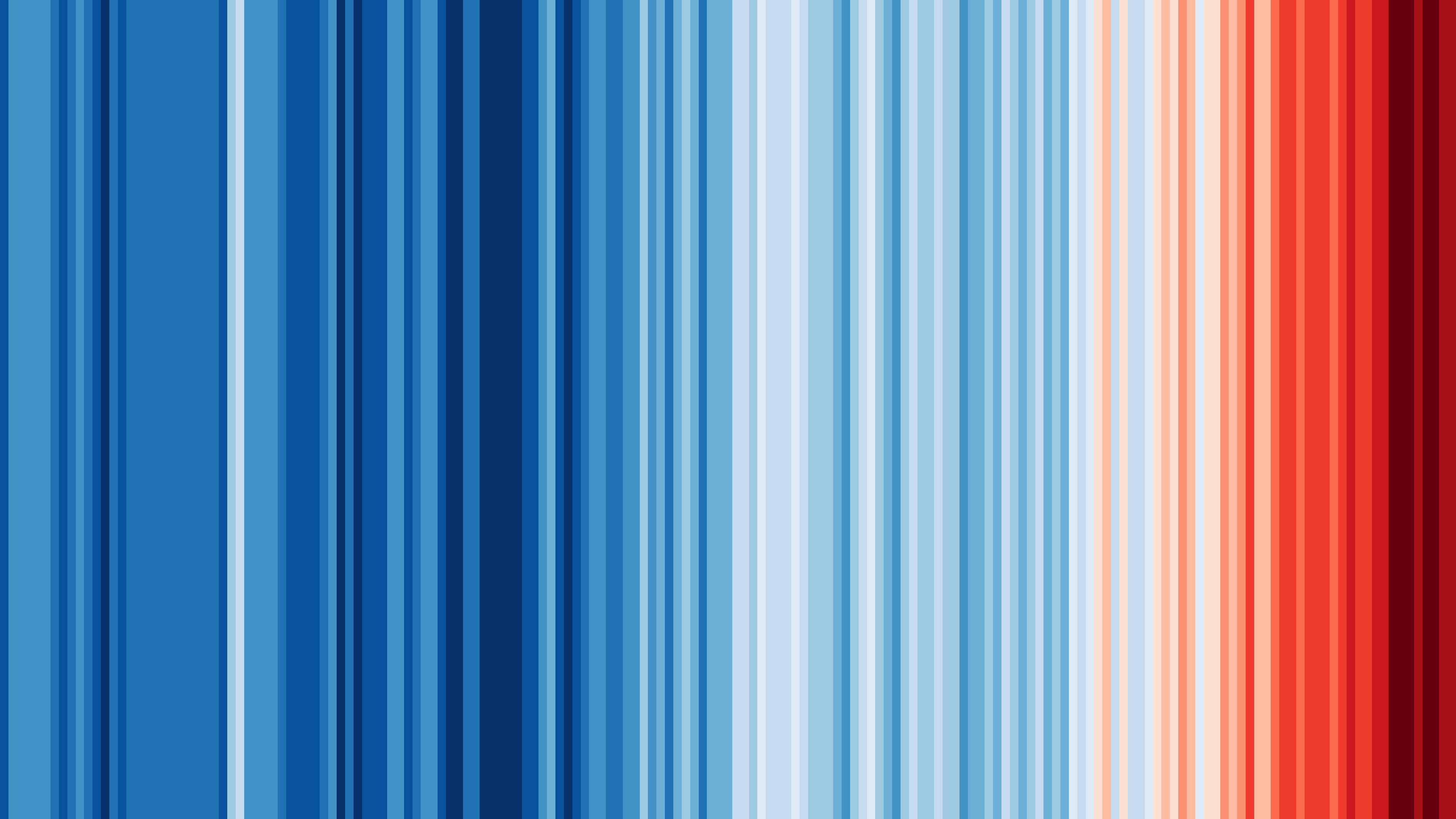Data Visualization
What makes a good data viz?
- What message does it convey?
- What questions does it raise?
- What makes it effective?
Example 1: Climate Lab: Warming Stripes (2018) (Ed Hawkins, University of Reading)

- See also this interactive version here or read more about its growing influence
- What’s the message of this viz?
- What questions does it raise
- Why is this effective?
Example 2: Wealth, shown to scale
April 2021, Matt Korostoff, read more on github: MKorostoff/1-pixel-wealth
Example 3: Dunham’s Data, Interactive Flow of Katherine Dunham’s Dancers, Drummers, and Singers (2019)
See also blog post by Kate Elswit and Harmony Bench
Other cool examples
- The Shape of Dreams (Google Trends), Federica Fragapane, 2020.
- Medium post: Visualizing the Shape of Dreams
- NY Times: Punishing Reach of Racism for Black Boys (3/19/2018)
- NB: url is paywalled - use NY Times Academic pass to view.
- See also: more info about the Opportunity Insights study that developed the data
How do you make a data viz?
Get data
- Collect it
- Find a dataset
- Clean and organize it
- Get to know the context and effects of the data collection process
- Basic info: try using wtf csv
Analyze data
- What types of data do you have?
- Numeric, categoric, geographic, temporal, relationships
- How many variables do you have? How do your variables relate to each other?
- quantities/distribution, correlation, part of a whole, change over time, relationships
- What questions can your dataset answer? What stories can it tell?
Create visualizations
- What will you show?
- All variables? Relationships between variables?
- Summaries? Every data point?
- What graph types would best communicate your data story?
- Useful resource: From Data to Viz
- Use your imagination! Draw your visualization on paper.
- For inspiration: Dear Data project, Georgia Lupi & Stefanie Posavec; See also the winners of the [Information is Beautiful Awards]
- Design considerations:
- What methods can you use to convey your variables?
- How can you make the results visually compelling and communicative?
- How can you make them more accessible?
Storytelling
- What should viewers take away from your visualization?
- What kind of contextual information is needed for them to understand it?
Activity: creating a data visualization using RawGraphs.io
- Choose one of the data samples and select a recommended visualization
- Assign categories and data columns to features
- Select colors and labels to customize your data viz
- Export it as an .svg file
Next steps
- Open the .svg in Illustrator for additional customization
- Find your own dataset to visualize in rawgraphs
- Embed your visualization in your log
Activity: collecting and drawing data
Collecting
- How many countries and US states have you lived in? For how long?
- List all the locations, with the approximate number of years you have lived there
- Add your name, each location, and the number of years to the excel spreadsheet for this workshop: dataviz-workshop-locations-6-11-24.xlsx
Drawing
- In groups of 2: draw visual representations of this dataset
- Design it however you like
- Aim to create two different versions
Resources
Sources for datasets
Tools for analyzing data
Data viz tools
- Raw graphs
- MS Excel - pivot tables & charts
- ObservableHQ - an interactive creative coding platform
- Tableau Public
- Programming languages
- Javascript D3
- R; plotly
- Python libraries
- Seaborn
- Altair
- Palladio
- Adobe Illustrator (available in lab computers) - for customizing design
Other resources
- Data Carpentries workshop: data organization for social scientists
NB correlation is not causation - see spurious correlations